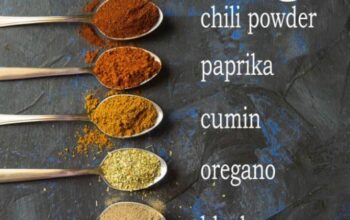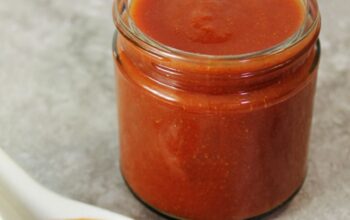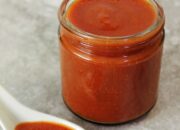Unleash Your Inner Chef with Homemade Soy Sauce!
Welcome to the flavorful world of Homemade soy sauce! If you’re a food enthusiast who loves experimenting in the kitchen, then crafting your own authentic soy sauce is the perfect culinary adventure for you. Not only will you impress your friends and family with your homemade creation, but you’ll also experience the satisfaction of making something delicious from scratch.
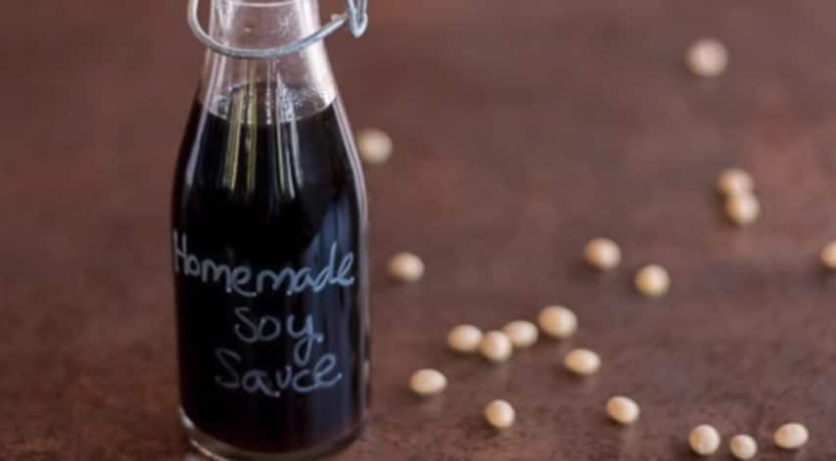
Image Source: akamaized.net
Soy sauce is a staple condiment in many Asian cuisines, known for its rich umami flavor and the depth it adds to dishes. While store-bought soy sauce is readily available, there’s something special about making your own. By crafting your own soy sauce, you have full control over the ingredients and flavors, allowing you to create a truly unique and personalized condiment.
The process of making soy sauce at home may seem daunting at first, but with the right guidance and a little bit of patience, you’ll soon become a soy sauce-making pro. From selecting the right soybeans and wheat to fermenting and aging the sauce, each step in the process is an opportunity to showcase your culinary skills and creativity.
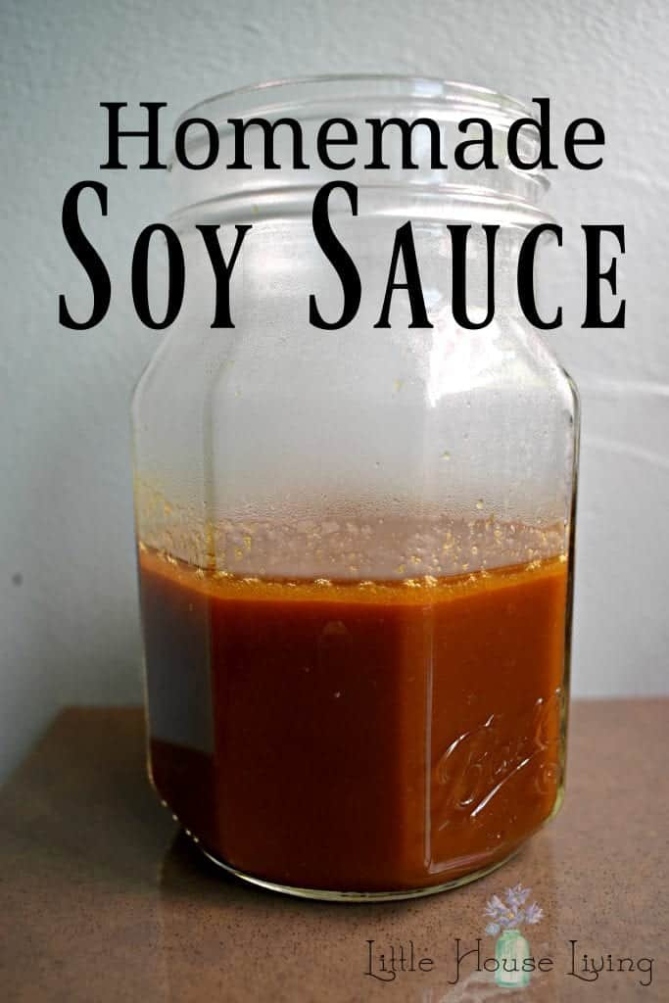
Image Source: littlehouseliving.com
To begin your journey into the world of homemade soy sauce, you’ll need to gather a few key ingredients and equipment. Soybeans, wheat, salt, and water are the basic components of soy sauce, along with koji spores, which are essential for the fermentation process. You’ll also need a large glass or ceramic container for fermenting the soy sauce, as well as a fine-mesh strainer for filtering out the solids.
Once you have all your ingredients and equipment ready, it’s time to start the soy sauce-making process. The first step is to soak the soybeans and wheat in water overnight to soften them. After soaking, the beans and wheat are cooked until soft, then mashed into a paste and mixed with salt and koji spores. This mixture is then transferred to the fermenting container and left to ferment for several months, during which time the flavors develop and mature.

Image Source: panlasangpinoy.com
Throughout the fermentation process, it’s important to monitor the soy sauce and taste it regularly to ensure it’s developing the desired flavor profile. As the sauce ages, it will become darker and more complex, with a rich umami taste that is characteristic of traditional soy sauce.
Crafting your own homemade soy sauce is not only a fun and rewarding culinary project but also a great way to connect with the traditional art of fermentation. By making your own soy sauce, you’ll gain a deeper appreciation for the time and care that goes into creating this beloved condiment.
So, why not unleash your inner chef and dive into the world of homemade soy sauce making? With a little bit of creativity and a whole lot of flavor, you’ll soon be savoring the fruits of your labor in the form of a delicious, authentic soy sauce that’s sure to impress even the most discerning food critics.
Get Ready to Dive into the World of Soy Sauce Making
Crafting authentic Homemade soy sauce is a delightful journey that allows you to explore the rich flavors and aromas of this beloved condiment. From the savory umami notes to the slight tanginess, making your own soy sauce is a rewarding experience that will elevate your culinary creations to a whole new level.
To start your soy sauce making adventure, you’ll need just a few simple ingredients: soybeans, wheat, salt, and water. These basic components are the building blocks of soy sauce, and with a little bit of patience and creativity, you can create a truly unique and flavorful condiment that is sure to impress your family and friends.
The process of making soy sauce is a labor of love that requires time and attention to detail. It all begins with soaking and steaming the soybeans and wheat, which helps to soften them and release their natural flavors. Once they are cooked, they are mixed together with salt and water to create a thick paste known as koji.
Koji is a key ingredient in soy sauce making, as it contains the enzymes necessary to break down the proteins and starches in the soybeans and wheat. This fermentation process is what gives soy sauce its signature flavor and aroma, and it can take anywhere from a few months to a few years to reach the desired level of fermentation.
During the fermentation process, the koji mixture is transferred to large wooden barrels known as fermentation tanks. These tanks are carefully monitored and maintained to ensure that the soy sauce develops the proper balance of flavors and aromas. As the soy sauce ferments, it takes on a deep, rich color and a complex, layered taste that is truly unique.
One of the most important aspects of soy sauce making is patience. While it may be tempting to rush the process and taste your soy sauce before it is fully matured, allowing it to ferment properly will result in a more flavorful and authentic condiment. The longer you let your soy sauce ferment, the more depth and complexity it will develop, making it well worth the wait.
As you dive into the world of soy sauce making, you’ll discover that there are countless variations and styles of soy sauce to explore. From light and delicate tamari soy sauce to rich and bold dark soy sauce, each variety offers its own unique flavor profile and culinary possibilities. Experimenting with different ingredients and fermentation times will allow you to create a soy sauce that is truly your own.
In addition to its delicious taste, Homemade soy sauce also offers a number of health benefits. Soy sauce is rich in essential amino acids, vitamins, and minerals, making it a nutritious addition to your diet. It is also naturally low in fat and calories, making it a healthy alternative to store-bought condiments.
So, are you ready to dive into the world of soy sauce making? With a little bit of time, patience, and creativity, you can create a truly authentic and flavorful condiment that will elevate your dishes to new heights. So roll up your sleeves, gather your ingredients, and get ready to craft your own homemade soy sauce masterpiece!
The Art of Crafting Your Own Authentic Soy Sauce
Are you ready to embark on a flavorful journey into the world of Homemade soy sauce? The art of crafting your own authentic soy sauce is a rewarding and delicious experience that will unleash your inner chef and elevate your culinary creations to new heights.
Soy sauce has been a staple in Asian cuisine for centuries, known for its rich umami flavor and versatile use in a variety of dishes. Making your own soy sauce at home allows you to customize the flavor to your liking and ensures that you are using fresh, high-quality ingredients.
To start your soy sauce making adventure, you will need just a few key ingredients: soybeans, wheat, salt, and water. These simple components come together to create a complex and flavorful condiment that will add depth and richness to your favorite dishes.
The first step in crafting your own authentic soy sauce is to ferment a mixture of soybeans and wheat. This process can take anywhere from a few weeks to several months, depending on the desired depth of flavor. As the mixture ferments, natural enzymes break down the proteins and starches in the soybeans and wheat, creating a rich and complex flavor profile.
Once the fermentation process is complete, the mixture is strained to remove the solids, leaving behind a liquid known as moromi. This liquid is then aged in barrels, allowing the flavors to mellow and develop over time. The end result is a dark, savory sauce that is bursting with umami goodness.
One of the keys to crafting authentic Homemade soy sauce is patience. While store-bought soy sauce can be produced quickly using artificial additives and flavor enhancers, true soy sauce aficionados know that the best things come to those who wait. By taking the time to ferment and age your soy sauce properly, you will be rewarded with a complex and nuanced flavor that simply cannot be replicated by mass-produced versions.
In addition to being a delicious condiment, homemade soy sauce is also a versatile ingredient that can be used in a wide variety of dishes. From stir-fries to marinades to dipping sauces, the possibilities are endless when it comes to incorporating your own soy sauce into your cooking.
So why not roll up your sleeves, gather your ingredients, and get ready to dive into the art of crafting your own authentic soy sauce? With a little time and effort, you can create a flavorful and delicious condiment that will take your culinary creations to the next level. Happy soy sauce making!
A Flavorful Journey to Homemade Soy Sauce Perfection
Welcome to a flavorful journey of crafting your own authentic Homemade soy sauce! As you embark on this culinary adventure, you will discover the art of creating a rich and delicious condiment that will elevate your dishes to a whole new level.
Soy sauce has been a staple in Asian cuisine for centuries, adding depth and complexity to a wide range of dishes. While store-bought soy sauce is readily available, there is something truly special about making your own from scratch. Not only does homemade soy sauce allow you to control the quality of ingredients, but it also gives you the opportunity to tailor the flavor to your own personal preferences.
To begin your journey to homemade soy sauce perfection, you will need just a few key ingredients: soybeans, wheat, salt, and water. These simple ingredients come together to create a complex and flavorful condiment that will impress even the most discerning palate.
The first step in making homemade soy sauce is to soak and cook the soybeans and wheat until they are soft and fragrant. This process helps to release the natural flavors of the ingredients and create a rich base for the soy sauce. Once the soybeans and wheat are cooked, they are mashed and mixed with water to create a thick paste known as koji.
Koji is a crucial element in the fermentation process of soy sauce, as it contains the enzymes necessary to break down the proteins and carbohydrates in the soybeans and wheat. This fermentation process is what gives soy sauce its distinctive umami flavor and complex aroma.
After the koji has been prepared, it is mixed with salt and water in a large fermentation vessel. The mixture is then left to ferment for several months, allowing the flavors to develop and mature. During this time, the soy sauce will undergo a natural aging process, developing its signature dark color and deep flavor profile.
As the soy sauce ferments, it is important to monitor the process carefully, tasting the sauce periodically to ensure that it is developing the desired flavor profile. The length of fermentation can vary depending on personal preference, with some preferring a lighter and sweeter soy sauce, while others prefer a darker and more robust flavor.
Once the soy sauce has reached the desired level of fermentation, it is strained and bottled for storage. Homemade soy sauce can be stored in a cool, dark place for several months, allowing the flavors to continue to develop and mature over time.
When it comes time to use your homemade soy sauce, you will be amazed at the depth of flavor and complexity it brings to your dishes. Whether you are marinating meats, seasoning stir-fries, or dipping sushi, homemade soy sauce will add a unique and delicious element to your cooking.
In conclusion, crafting your own authentic homemade soy sauce is a rewarding and flavorful journey that will elevate your culinary skills to new heights. By following these simple steps and allowing the soy sauce to ferment and develop over time, you will create a condiment that is truly unique and delicious. So why not unleash your inner chef and dive into the world of soy sauce making today? Your taste buds will thank you!
how to make homemade soy sauce


